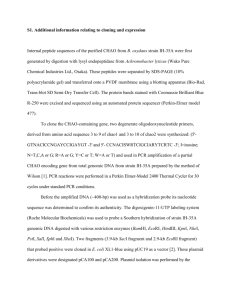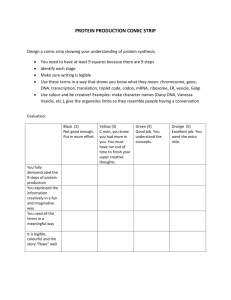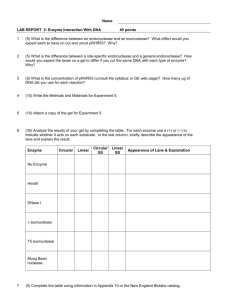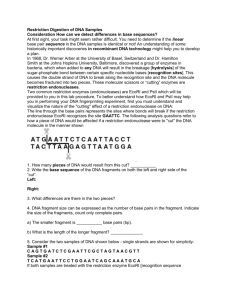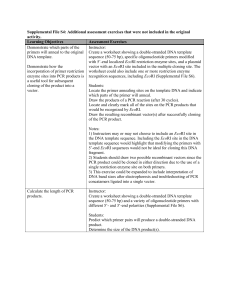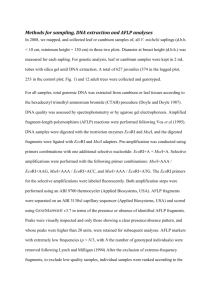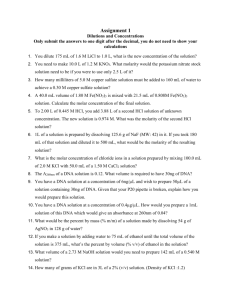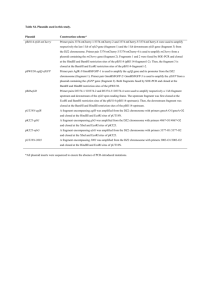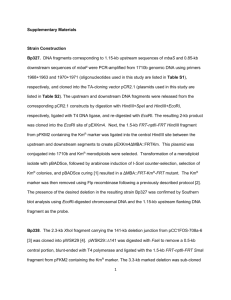Exercise 1
advertisement
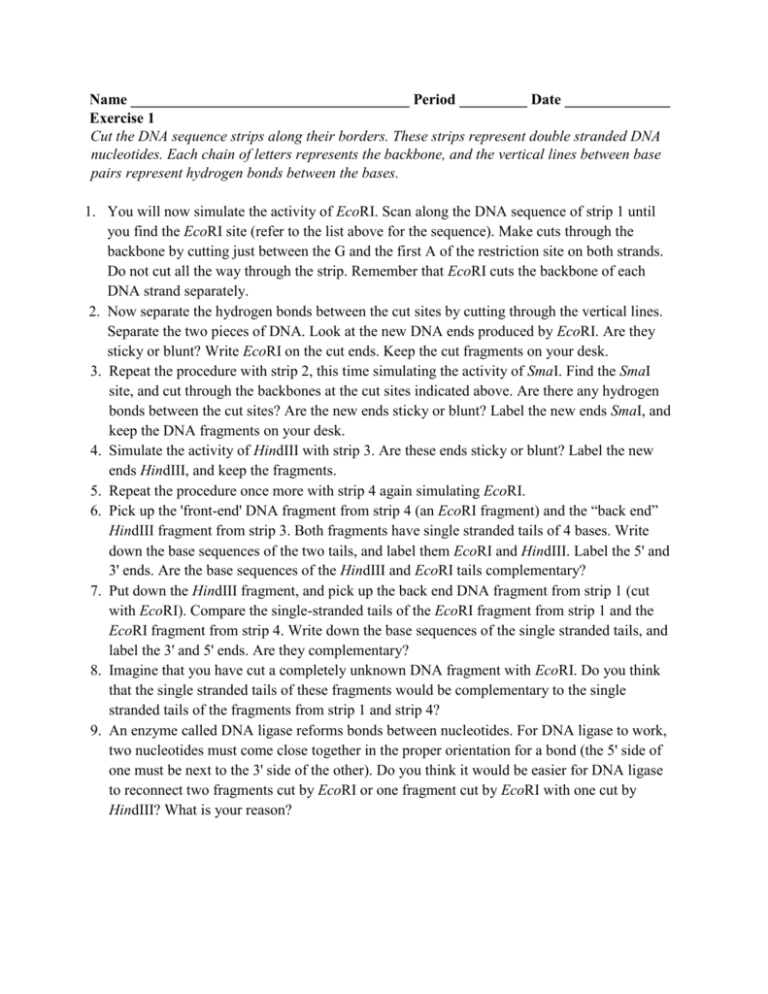
Name _____________________________________ Period _________ Date ______________ Exercise 1 Cut the DNA sequence strips along their borders. These strips represent double stranded DNA nucleotides. Each chain of letters represents the backbone, and the vertical lines between base pairs represent hydrogen bonds between the bases. 1. You will now simulate the activity of EcoRI. Scan along the DNA sequence of strip 1 until you find the EcoRI site (refer to the list above for the sequence). Make cuts through the backbone by cutting just between the G and the first A of the restriction site on both strands. Do not cut all the way through the strip. Remember that EcoRI cuts the backbone of each DNA strand separately. 2. Now separate the hydrogen bonds between the cut sites by cutting through the vertical lines. Separate the two pieces of DNA. Look at the new DNA ends produced by EcoRI. Are they sticky or blunt? Write EcoRI on the cut ends. Keep the cut fragments on your desk. 3. Repeat the procedure with strip 2, this time simulating the activity of SmaI. Find the SmaI site, and cut through the backbones at the cut sites indicated above. Are there any hydrogen bonds between the cut sites? Are the new ends sticky or blunt? Label the new ends SmaI, and keep the DNA fragments on your desk. 4. Simulate the activity of HindIII with strip 3. Are these ends sticky or blunt? Label the new ends HindIII, and keep the fragments. 5. Repeat the procedure once more with strip 4 again simulating EcoRI. 6. Pick up the 'front-end' DNA fragment from strip 4 (an EcoRI fragment) and the “back end” HindIII fragment from strip 3. Both fragments have single stranded tails of 4 bases. Write down the base sequences of the two tails, and label them EcoRI and HindIII. Label the 5' and 3' ends. Are the base sequences of the HindIII and EcoRI tails complementary? 7. Put down the HindIII fragment, and pick up the back end DNA fragment from strip 1 (cut with EcoRI). Compare the single-stranded tails of the EcoRI fragment from strip 1 and the EcoRI fragment from strip 4. Write down the base sequences of the single stranded tails, and label the 3' and 5' ends. Are they complementary? 8. Imagine that you have cut a completely unknown DNA fragment with EcoRI. Do you think that the single stranded tails of these fragments would be complementary to the single stranded tails of the fragments from strip 1 and strip 4? 9. An enzyme called DNA ligase reforms bonds between nucleotides. For DNA ligase to work, two nucleotides must come close together in the proper orientation for a bond (the 5' side of one must be next to the 3' side of the other). Do you think it would be easier for DNA ligase to reconnect two fragments cut by EcoRI or one fragment cut by EcoRI with one cut by HindIII? What is your reason?
